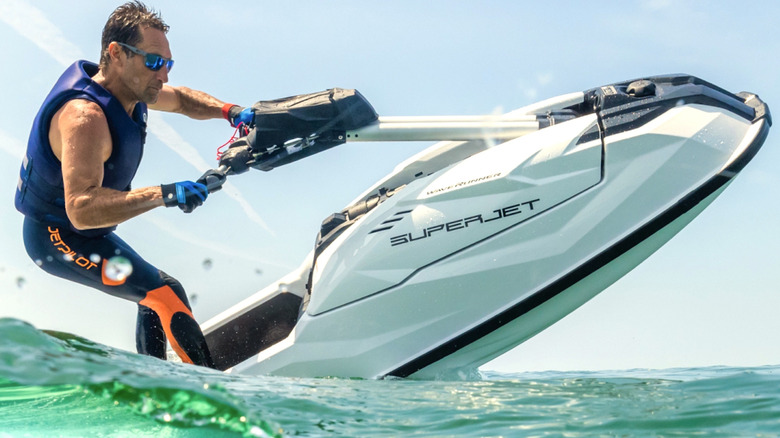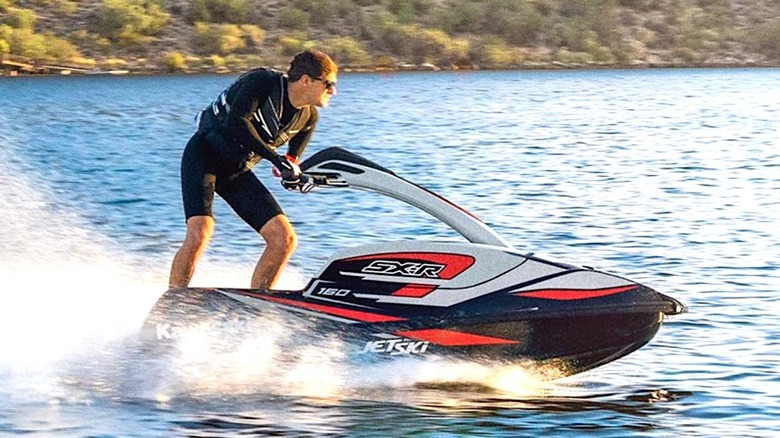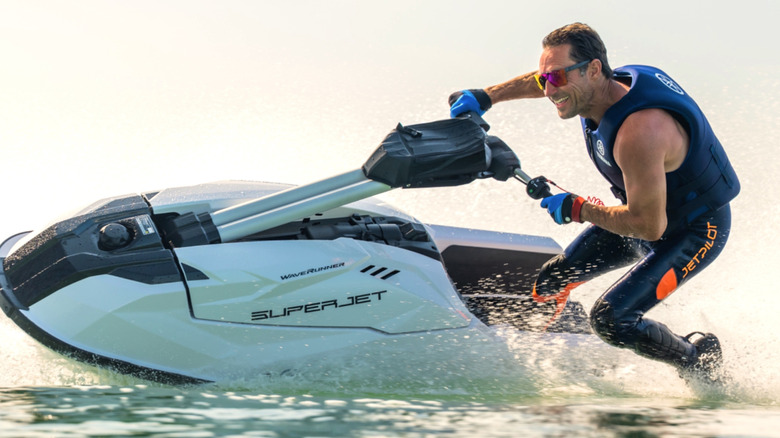Kawasaki SX-R Jet Ski Vs. Yamaha SuperJet: How Do These Watercraft Compare?
If you're the sort of person who enjoys spending as much time as possible in the great outdoors, you likely enjoy passing at least some of that time in the water, be it on a lake, a river, or in the salty waters of the ocean. These days, there are, perhaps, more vehicular options available than ever before to help you enjoy some wet and wild fun, including powerful outboard motorboats, powered waveboards, underwater scooters, and flyboards.
Of course, one of the go-to modes of transportation for many water sport enthusiasts continues to be a personal watercraft like those made by legendary motorcycle manufacturers like Kawasaki and Yamaha. If you're familiar with such vehicles, you know those factions have branded their crafts Jet Ski and WaveRunner, respectively, and that they've pretty much dominated the market for such vehicles, with models available in single- and multi-passenger designs, as well as standup and sit-down variations.
Given their prominence in the personal watercraft (PWC) arena, you'd be right in assuming that Kawasaki and Yamaha make several vehicles that bear a striking resemblance to each other in style, power, and performance. That list includes the Kawasaki SX-R Jet Ski and the Yamaha WaveRunner SuperJet, which have become popular choices for wave riders who prioritize performance. If you count yourself among that faction and are unsure which of the stand-up, one-passenger craft best suits your needs, we're here to help with a head-to-head comparison of the two machines.
Kawasaki SX-R Jet Ski
For the record, Sea-Doo actually beat Kawasaki and Yamaha to the personal watercraft market by releasing the world's first production PWC in the late 1960s. Kawasaki was the next major manufacturer to turn its attention to personal watercraft, reaching an agreement with Sea-Doo to use their designs to make its own wave rider, which was dubbed the Jet Ski. In the decades since first trademarking the Jet Ski name, Kawasaki has continued developing its PWC program, and the SX-R currently ranks among the best of its high-performance builds.
Kawasaki debuted the SX-R in 2017, and the build, arguably, became a high water mark for the personal watercraft sector upon its debut. This was due in large part to the model's power output, with the O.G. builds fronting a 1498cc four-stroke engine that reportedly made it the fastest-accelerating stand-up PWC ever commercially produced. The SX-R is powered by the same four-stroke beast as Kawasaki's Ultra Jet Skis, with the 2024 model boasting horsepower at 150 hp (or 112 KW) and torque at 106 lb-ft (or 144 NM).
That output makes the SX-R race day ready, and, given its credentials, you'd be right in assuming the SX-R is also a highly maneuverable PWC, with Kawasaki reworking the design of the Jet Ski's hull to make it more stable and easier to control. The SX-R's combo of power and maneuverability should deliver on-the-water thrills for anyone who rides it. At a reported 551 lbs, the SX-R is, however, pretty heavy, which you'll want to consider in regards to transporting it from your home to the open water. Also worth considering is the PWC's lofty $11,999 sticker price.
Yamaha SuperJet
Yamaha came a little later to the personal watercraft game than Kawasaki, but the Japanese manufacturer has more than made its mark in the market over the years. In fact, Yamaha was the best-selling PWC brand in the world as recently as 2023, with the WaveRunner shingle continuing to prove popular in part due to the line's user-friendly appeal. The SuperJet has been a part of the WaveRunner lineup in some capacity since the early 1990s, with the latest models offering considerable upgrades over those first builds.
Like the Kawasaki SX-R, the SuperJet is powered by a four-stroke engine, though its 1049cc displacement build packs a little less on the power front. The SuperJet is not supercharged like some other Yamaha WaveRunners, though the PWC's 3-cylinder TR-1 engine is still capable of delivering upwards of 100 horsepower to riders. With a dry weight of 375 lbs, the vehicle is considerably lighter than the SX-R and about 9 inches shorter, too, which bolsters its get-up-and-go to the point that even Yamaha describes the SuperJet as "torquey." Moreover, the manufacturer claims those numbers rank the SuperJet as the most powerful build available in the lite recreation sector.
While it may not win many head-to-head races with the Kawasaki SX-R, the SuperJet still holds its own on the water for anybody in search of a punchy mix of power and maneuverability. With an MSRP of $10,999, it's also priced at a cool G less than the Kawasaki, and if you're eyeing it purely for recreational purposes, a thousand bucks could be make-or-break territory. Of course, that depends entirely on the experience you're looking for when you're taking it to the water.


